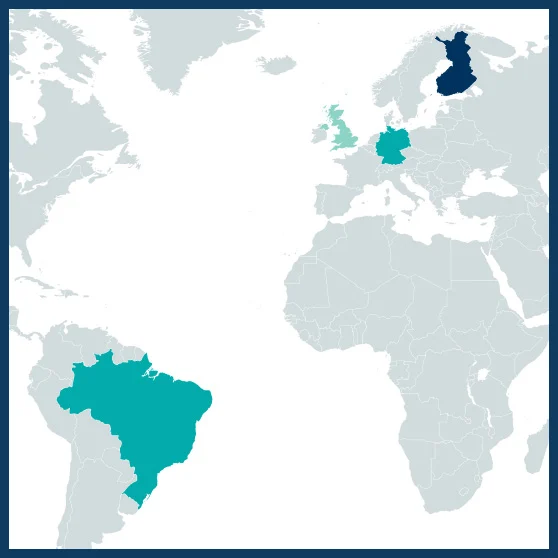01/04/2021 – 31/03/2024
€ 561,000
Hanna Tuomisto
hanna.tuomisto@utu.fi
Coordinator: Biology – University of Turku – Turku – Finland
Wetland Ecology – Karlsruhe Institute of Technology – Rastatt – Germany
Biodiversity – National Institute of Amazonian Research, Amazonas – Brazil
Arts, Sciences and Humanities – University of São Paulo – São Paulo – Brazil
Environmental Sciences – University of East Anglia – Norwich – United-Kingdom

Climate change affects life at all levels, from genetic structure of animal and plant populations to socio-economic organisation of human communities. For Amazonia, current models project warmer and drier climates, which could make large areas unsuitable for species adapted to moist rainforest conditions and increase the susceptibility of vegetation to wildfires, thereby promoting savannisation. This, in turn, would reduce biodiversity, biomass, carbon storage and productivity of the forests, as well as further reduce local rainfall and affect river water levels through impacts on water circulation.
CLAMBIO aims to clarify:
• Climate–biodiversityfeedbackprocessesinAmazonia,suchastheconsequences of past climate changes on the evolution and distribution of Amazonian plants and animals.
• How the ongoing climate change may affect the viability of Amazonian plant and animal species, and which Amazonian regions and habitat types are most vulnerable to the combined effects of climate change, deforestation and fire.
• How the sources of indigenous livelihoods in major river basins have already been impacted by changes in their environment, which aspects are most vulnerable to climate change in the future, and how the communities could mitigate the adverse effects.
The project will integrate data from geological sediment cores and existing models of past climate with data on species distributions, genomics and community phylogenetics to reconstruct past climatic changes in Amazonia and to infer how past climate changes have impacted habitat stability, species dispersal and local extinctions. Present-day environmental data will be used to identify the most important constraints on species distributions, and to model how the distributions of suitable habitats may change in the future, given current climate scenarios and the likely increasing risk of forest fires. Long-term monitoring of annual cycles by indigenous communities will be analysed to characterise natural resource use.
These results will be integrated to estimate the degree of both uniqueness and vulnerability of biological communities across Amazonia, and to unravel specific threats to human populations within two indigenous lands located in distinct ecological and socio-economic scenarios within Amazonia. The studies will be made in close collaboration with indigenous peoples who depend on the forests for their livelihoods. The results will be available for the local communities to use in defending their rights and exposing the impacts of anthropogenic development to their modes of life, as perceived by themselves.